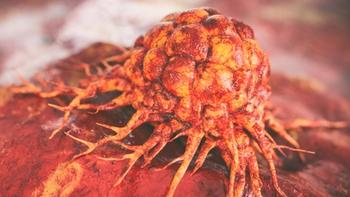
Oncology NEWS International
- Oncology NEWS International Vol 9 No 11
- Volume 9
- Issue 11
Early HDC Improves Survival in Infants With Acute Leukemia
SANTANDER, Spain-High-dose chemotherapy (HDC) with stem cell transplantation offers a “striking improvement” over conventional chemotherapy for infants with acute leukemia, said Fernando Marco, MD, a hematologist at Hospital Universitario Marques de Valdecilla, Santander, Spain.
SANTANDER, SpainHigh-dose chemotherapy (HDC) with stem cell transplantation offers a striking improvement over conventional chemotherapy for infants with acute leukemia, said Fernando Marco, MD, a hematologist at Hospital Universitario Marques de Valdecilla, Santander, Spain.
In this study, 26 infants with acute leukemia underwent high-dose chemotherapy with stem cell transplantation (eight allogeneic and 18 autologous). Fifteen patients had acute myeloid leukemia, 10 had acute lymphoid leukemia, and one had a bilineal leukemia.
All patients had been previously treated: 22 were in their first complete remission, three were in their second complete remission, and one was in relapse.
At 67 months median follow-up, the 5-year overall survival rate is 64% and the 5-year disease-free survival rate is 63%. Outcomes were similar with use of allogeneic and autologous transplantation (J Clin Oncol 18:3256-3261, 2000).
No Transplant-Related Deaths
Dr. Marco reported that there was no transplant-related mortality; all deaths were due to relapse in the first 6 months after transplantation. In multivariate analysis, he said, the single factor associated with better disease-free survival was an interval between first complete remission and transplantation of less than 4 months (P < .025).
Stem cell transplantation is a valid option in the treatment of infant acute leukemia, Dr. Marco concluded, and it may overcome the high risk of relapse with conventional chemotherapy. The study suggests that stem cell transplantation should be performed when the patient is in first complete remission.
Articles in this issue
about 25 years ago
Joe & Ali Torre Lead ‘Two Against One’ Prostate Cancer Campaignabout 25 years ago
Efforts to Reduce Tobacco Deaths May Fail in the Short Termabout 25 years ago
Data Published for First-Line Irinotecanabout 25 years ago
Manufacturing Capability a Factor in Success of New Biologicsabout 25 years ago
Report Finds States Not Using Tobacco Funds for Preventionabout 25 years ago
NCI Intramural Program Challenged to ‘Reinvent Itself’about 25 years ago
Surgery Supported for Recurring Colorectal Cancerabout 25 years ago
Breast Cancer Stamp Funds $6.7 Million in 2-Year NCI Grantsabout 25 years ago
Human Side of Cancer Offers Insights on Coping With the DiseaseNewsletter
Stay up to date on recent advances in the multidisciplinary approach to cancer.

















































































